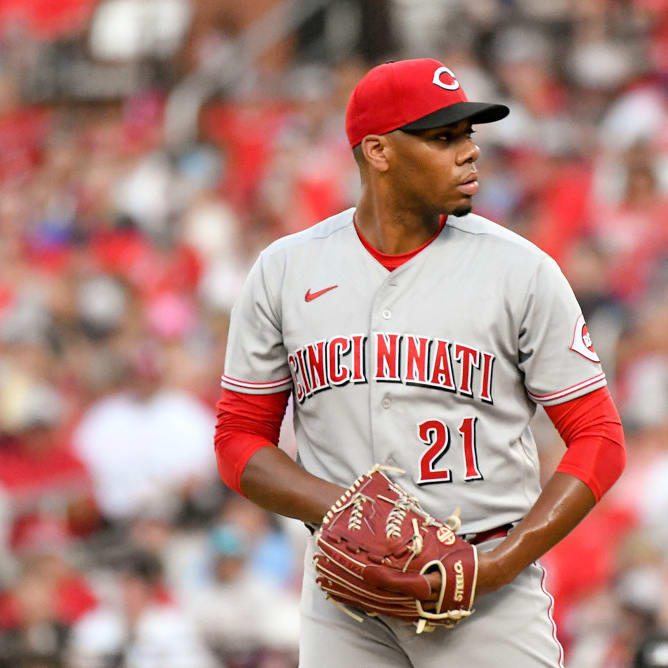This article is part of our MLB Barometer series.
After weeks without much optimism regarding MLB's eventual return, we were finally treated to some good news Monday, with ESPN's Jeff Passan reporting that owners were finally ending their attempts to violate an agreement signed with the MLBPA back in late March that guaranteed the players their prorated salaries. After threatening to renege on that agreement by asking the players to return in the middle of an active pandemic while dramatically slashing their pay, the owners might finally be coming to their senses and realizing the damage they could do to the sport long-term if they prioritized their short-term finances over both the health of the game and kindergarten-level moral principles like following through on promises.
That's not to say that everything has been worked out and that we'll definitely have baseball in America this year, though things look considerably better than they did last week. There is, of course, the whole "asking players to return in the middle of an active pandemic" thing. This isn't a situation analogous to Taiwan or South Korea, where those two countries had essentially defeated the coronavirus before resuming play. I'm by no means an epidemiologist, but the odds of the virus disappearing from American soil by early July don't look good. This isn't necessarily a point of contention between the players and owners--both sides appear to be fully aware of the health risks involved and are willing to take the necessary steps to mitigate them--but there's no guarantee that a safe solution can
After weeks without much optimism regarding MLB's eventual return, we were finally treated to some good news Monday, with ESPN's Jeff Passan reporting that owners were finally ending their attempts to violate an agreement signed with the MLBPA back in late March that guaranteed the players their prorated salaries. After threatening to renege on that agreement by asking the players to return in the middle of an active pandemic while dramatically slashing their pay, the owners might finally be coming to their senses and realizing the damage they could do to the sport long-term if they prioritized their short-term finances over both the health of the game and kindergarten-level moral principles like following through on promises.
That's not to say that everything has been worked out and that we'll definitely have baseball in America this year, though things look considerably better than they did last week. There is, of course, the whole "asking players to return in the middle of an active pandemic" thing. This isn't a situation analogous to Taiwan or South Korea, where those two countries had essentially defeated the coronavirus before resuming play. I'm by no means an epidemiologist, but the odds of the virus disappearing from American soil by early July don't look good. This isn't necessarily a point of contention between the players and owners--both sides appear to be fully aware of the health risks involved and are willing to take the necessary steps to mitigate them--but there's no guarantee that a safe solution can be found.
There are also still many other details that need to be sorted. While the owners have finally relented in their attempts to violate the previous deal they signed with the union, they seem to be expecting some sort of concession in exchange for that "generous" position. The primary matter of debate at this point appears to be the length of the schedule. The agreement the two sides signed back in March gives the league the power to make a new schedule. While the players proposed a 114-game schedule in which they'd make their prorated salaries, the owners countered with an offer in which players would make their prorated salaries across just 50 games.
Ostensibly, the significantly shorter schedule was proposed due to fears of a second wave of the pandemic wiping out the playoffs, but the proposal was presumably primarily a cash grab. The difference in how much players would wind up making between the two proposals is quite large, with the owners' offer guaranteeing players just 44% of what they'd asked for. While a compromise can probably be reached, the fact that this is still at its heart a fight over finances means discussion likely won't go smoothly.
It's worth noting that the midpoint between the two proposed schedules would be an 82-game season, which happens to be the exact number of games played in a typical NBA or NHL campaign. It's quite possible that a season of approximately that length will be the proposal the two sides eventually agree on, with play likely resuming sometime in July. For a sense of just how weird things could be if the season does end up being only 50 games, however, take a look at the following list of things which were true on May 23 of last season, when teams had played between 47 and 52 games:
- The Phillies, who finished the season fourth in the NL East with an 81-81 record, 16 games back of the Braves, led the division by 1.5 games.
- The Cubs, who finished not much better at 84-78, seven games back of the Cardinals, led the NL Central by 1.5 games and were 4.5 games up on the Cardinals.
- Daniel Vogelbach was in the top 10 in homers with 14 and sat eighth among qualified hitters with a 167 wRC+.
- Cody Bellinger was batting a ridiculous .394.
- Jose Ramirez was hitting an awful .198/.300/.302 with just four homers.
- Starling Marte, who finished the year with a 119 wRC+, had a wRC+ of just 77 thanks to a .244/.275/.415 slash line.
- Martin Perez was tied for third in the league with seven wins.
- Max Scherzer had won just two games.
- Eduardo Rodriguez owned a 5.43 ERA, sixth-worst among qualified starters.
- Aaron Nola had a 4.53 ERA and a 1.54 WHIP, the latter representing the third-worst mark among qualified starters.
- Caleb Smith's ERA was 2.38, third among qualified starters, while his WHIP was 0.89, fifth among that same group.
- Spencer Turnbull and Zach Eflin sat 13th and 14th among qualified starters with ERAs of 2.68 and 2.76, respectively.
It's not hard to see that if the owners' latest proposal is adopted and the season is just 50 games long, we could see plenty of unusual results. Someone could bat .400. Your top pitcher could have one of the league's worst ERAs, while your late-round lottery ticket could have one of the league's best. We're so used to thinking "things will eventually even out" that we're likely to be quite surprised when they don't have the time to do so. This week's barometer will examine a few of the types of players who become more or less interesting in a very short season, as well as a handful of players whose values have shifted thanks to recent news.
RISERS
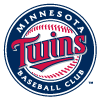 Miguel Sano, 3B, Twins: The No. 1 thing I expect to see from hitters in a very short season is some very surprising batting averages. Even over a full season, batting averages are hard to trust, which is why we frequently turn to stats like BABIP to see whether or not a batting average is legitimate and sustainable. Batting average involves plenty of luck, as it's not really a skill to smash a line drive 15 feet to the right of the shortstop rather than directly at him. In contrast, hitting the ball out of the park is primarily under the hitter's control--he may not have much of an effect on the number of crushable balls he sees in a season, but once the ball strikes his bat, luck is more or less completely out of the equation. Those factors make Sano the perfect stand-in for the type of player I'll be targeting if the season is indeed just 50 games long. There are significant questions about his ability to hit for average, as he hit just .199 in 71 games in 2018, but his ability to crush the ball isn't in any doubt, as he finished second in average exit velocity last season while hitting 34 homers in just 105 games. You'll want guys strong in stable areas and weak in volatile ones, and that describes Sano perfectly.
Miguel Sano, 3B, Twins: The No. 1 thing I expect to see from hitters in a very short season is some very surprising batting averages. Even over a full season, batting averages are hard to trust, which is why we frequently turn to stats like BABIP to see whether or not a batting average is legitimate and sustainable. Batting average involves plenty of luck, as it's not really a skill to smash a line drive 15 feet to the right of the shortstop rather than directly at him. In contrast, hitting the ball out of the park is primarily under the hitter's control--he may not have much of an effect on the number of crushable balls he sees in a season, but once the ball strikes his bat, luck is more or less completely out of the equation. Those factors make Sano the perfect stand-in for the type of player I'll be targeting if the season is indeed just 50 games long. There are significant questions about his ability to hit for average, as he hit just .199 in 71 games in 2018, but his ability to crush the ball isn't in any doubt, as he finished second in average exit velocity last season while hitting 34 homers in just 105 games. You'll want guys strong in stable areas and weak in volatile ones, and that describes Sano perfectly.
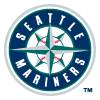 Mallex Smith, OF, Mariners: While batting average is full of variance and thus harder to predict in short season, steals appear to be far more similar to homers as things which are more directly under a player's control and thus less subject to variance. For just one example, check out Smith's month-by-month steals numbers from last season next to his month-by-month batting averages:
Mallex Smith, OF, Mariners: While batting average is full of variance and thus harder to predict in short season, steals appear to be far more similar to homers as things which are more directly under a player's control and thus less subject to variance. For just one example, check out Smith's month-by-month steals numbers from last season next to his month-by-month batting averages:
| Month | Steals | AVG |
|---|---|---|
| March/April | 8 | .165 |
| May | 6 | .250 |
| June | 7 | .274 |
| July | 8 | .253 |
| August | 10 | .258 |
| September | 7 | .131 |
It's pretty clear from those numbers that while you might not know how well Smith was going to hit in a given month, you could be pretty sure about how many bases he was going to steal. Elite steals guys like Smith should finish quite close to their prorated projections in that category over a 50-game season and should be fairly reliable investments. For Smith in particular, his stock gets an additional bonus from a very short season in that he's unlikely to have the time to play himself out of a job, which is the biggest threat to his steals total this year.
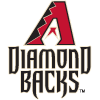 Robbie Ray, SP, Diamondbacks: Quick! Tell me what Robbie Ray's ERA will be this season. If you answered anywhere between 2.89 and 4.90, you'd get no argument from me, as he's hit both ends of that range within just the last four years. If I'd asked what his strikeout rate would be, you'd only have a rather narrow window from 28.1 percent to 32.8 percent if you wanted to be equally believable, as he's been within that small band over that same four-year stretch. (If you looked at just the last three years, he's been within an incredibly narrow range of 31.4 percent to 32.8 percent.) What that demonstrates is that strikeout guys can be relied on to get their strikeouts, but a pitcher's ERA is liable to vary wildly even if his underlying numbers remain quite constant. Ray's inclusion here doesn't mean I think he'll produce a low ERA this year, but rather that I never had any idea if his ERA was going to be good even in a full-length season. Like Sano and Smith, he's strong in categories which stabilize quickly while weak in categories that can be unreliable even in a 162-game campaign.
Robbie Ray, SP, Diamondbacks: Quick! Tell me what Robbie Ray's ERA will be this season. If you answered anywhere between 2.89 and 4.90, you'd get no argument from me, as he's hit both ends of that range within just the last four years. If I'd asked what his strikeout rate would be, you'd only have a rather narrow window from 28.1 percent to 32.8 percent if you wanted to be equally believable, as he's been within that small band over that same four-year stretch. (If you looked at just the last three years, he's been within an incredibly narrow range of 31.4 percent to 32.8 percent.) What that demonstrates is that strikeout guys can be relied on to get their strikeouts, but a pitcher's ERA is liable to vary wildly even if his underlying numbers remain quite constant. Ray's inclusion here doesn't mean I think he'll produce a low ERA this year, but rather that I never had any idea if his ERA was going to be good even in a full-length season. Like Sano and Smith, he's strong in categories which stabilize quickly while weak in categories that can be unreliable even in a 162-game campaign.
 Brad Miller, 3B, Cardinals: Miller has been mentioned among a small handful of Cardinals likely to have a shot at an expanded role if the designated hitter comes to both leagues this season, something which appears quite likely. Miller began his career as primarily a shortstop, but he's morphed into a utility man who can get by almost anywhere but who doesn't play particularly good defense at any position. After a couple seasons where he didn't do much on the offensive end, either, he bounced back with a strong .260/.329/.565 line in a small sample of 170 plate appearances for Cleveland and Philadelphia. There could be a role for him on the large side of a platoon at designated hitter this season, as he owns a career 110 wRC+ against righties but a poor 71 wRC+ against southpaws.
Brad Miller, 3B, Cardinals: Miller has been mentioned among a small handful of Cardinals likely to have a shot at an expanded role if the designated hitter comes to both leagues this season, something which appears quite likely. Miller began his career as primarily a shortstop, but he's morphed into a utility man who can get by almost anywhere but who doesn't play particularly good defense at any position. After a couple seasons where he didn't do much on the offensive end, either, he bounced back with a strong .260/.329/.565 line in a small sample of 170 plate appearances for Cleveland and Philadelphia. There could be a role for him on the large side of a platoon at designated hitter this season, as he owns a career 110 wRC+ against righties but a poor 71 wRC+ against southpaws.
 Roman Quinn, OF, Phillies: Quinn has quite a lot of speed, which has helped him steal 23 bases in his big-league career while receiving just 334 plate appearances. What he doesn't have is durability. He's never played in 100 games in a season as a professional and hasn't even reached the 80-game threshold in any of the last three seasons. With the season now looking unlikely to stretch even to 100 games, Quinn could finally be healthy for most of a campaign. He's likely to begin the year as the Phillies' fourth outfielder, but he should have at least a modest role early and could get the chance to carve out a larger one if Adam Haseley fails to improve on his modest .266/.324/.396 showing as a rookie.
Roman Quinn, OF, Phillies: Quinn has quite a lot of speed, which has helped him steal 23 bases in his big-league career while receiving just 334 plate appearances. What he doesn't have is durability. He's never played in 100 games in a season as a professional and hasn't even reached the 80-game threshold in any of the last three seasons. With the season now looking unlikely to stretch even to 100 games, Quinn could finally be healthy for most of a campaign. He's likely to begin the year as the Phillies' fourth outfielder, but he should have at least a modest role early and could get the chance to carve out a larger one if Adam Haseley fails to improve on his modest .266/.324/.396 showing as a rookie.
FALLERS
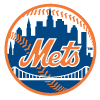 Marcus Stroman, SP, Mets: While Ray was listed above as the archetype of a pitcher who becomes most interesting in a very short season, Stroman is listed here as the exact opposite archetype. He doesn't strike many batters out, posting a striking out rate between 17.2 percent and 20.5 percent over the last four seasons. Fantasy owners who like Stroman value him presumably for his ability to provide a strong ERA, such as his 3.09 ERA in 2017 or his 3.22 mark last year. Those fantasy owners will get burned this year if his ERA over a small sample looks far more like his 5.54 mark from 2018. He didn't even necessarily pitch much worse that season, as his 3.91 FIP was a near-perfect match for his 3.90 FIP from 2017, even while his ERA was nearly 2.5 runs higher. A player whose weaknesses are stable and whose strengths are volatile isn't one who I'll be very interested in this year.
Marcus Stroman, SP, Mets: While Ray was listed above as the archetype of a pitcher who becomes most interesting in a very short season, Stroman is listed here as the exact opposite archetype. He doesn't strike many batters out, posting a striking out rate between 17.2 percent and 20.5 percent over the last four seasons. Fantasy owners who like Stroman value him presumably for his ability to provide a strong ERA, such as his 3.09 ERA in 2017 or his 3.22 mark last year. Those fantasy owners will get burned this year if his ERA over a small sample looks far more like his 5.54 mark from 2018. He didn't even necessarily pitch much worse that season, as his 3.91 FIP was a near-perfect match for his 3.90 FIP from 2017, even while his ERA was nearly 2.5 runs higher. A player whose weaknesses are stable and whose strengths are volatile isn't one who I'll be very interested in this year.
 Luis Arraez, 2B, Twins: Arraez is the counterpart to Sano and Smith, who are strong in stable categories but weak in the high-variance category of batting average. Arraez is the polar opposite of that pair, as he burst onto the scene with a .334 average in 92 games last year but who did essentially nothing else, homering just four times and stealing just two bases. You can more or less count on him being a near-zero in those categories again this season, regardless of how long the season is, meaning his value is entirely dependent on one high-variance category. That could theoretically be a reason to take him, as he has as good a chance as anyone to hit .400 in a 50-game season. He has much more room to fall than he has to rise in his one strong category, however, so taking him comes with the real risk that he winds up providing almost no value anywhere.
Luis Arraez, 2B, Twins: Arraez is the counterpart to Sano and Smith, who are strong in stable categories but weak in the high-variance category of batting average. Arraez is the polar opposite of that pair, as he burst onto the scene with a .334 average in 92 games last year but who did essentially nothing else, homering just four times and stealing just two bases. You can more or less count on him being a near-zero in those categories again this season, regardless of how long the season is, meaning his value is entirely dependent on one high-variance category. That could theoretically be a reason to take him, as he has as good a chance as anyone to hit .400 in a 50-game season. He has much more room to fall than he has to rise in his one strong category, however, so taking him comes with the real risk that he winds up providing almost no value anywhere.







